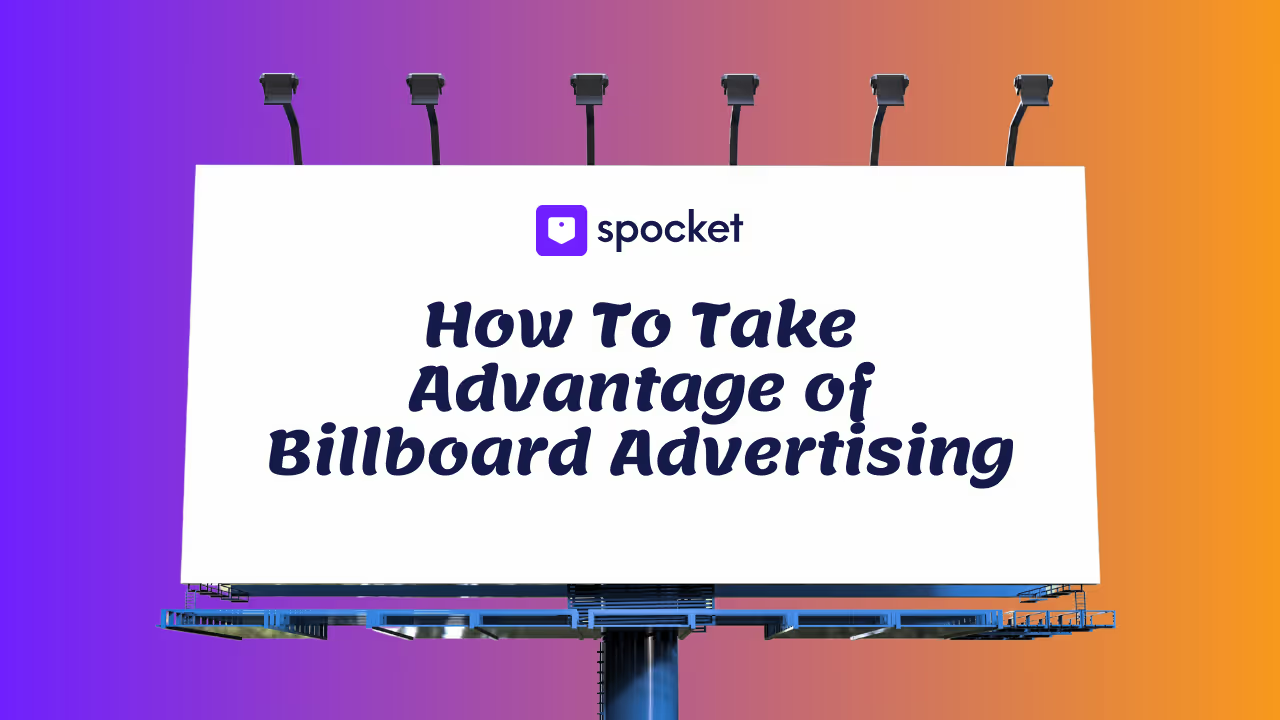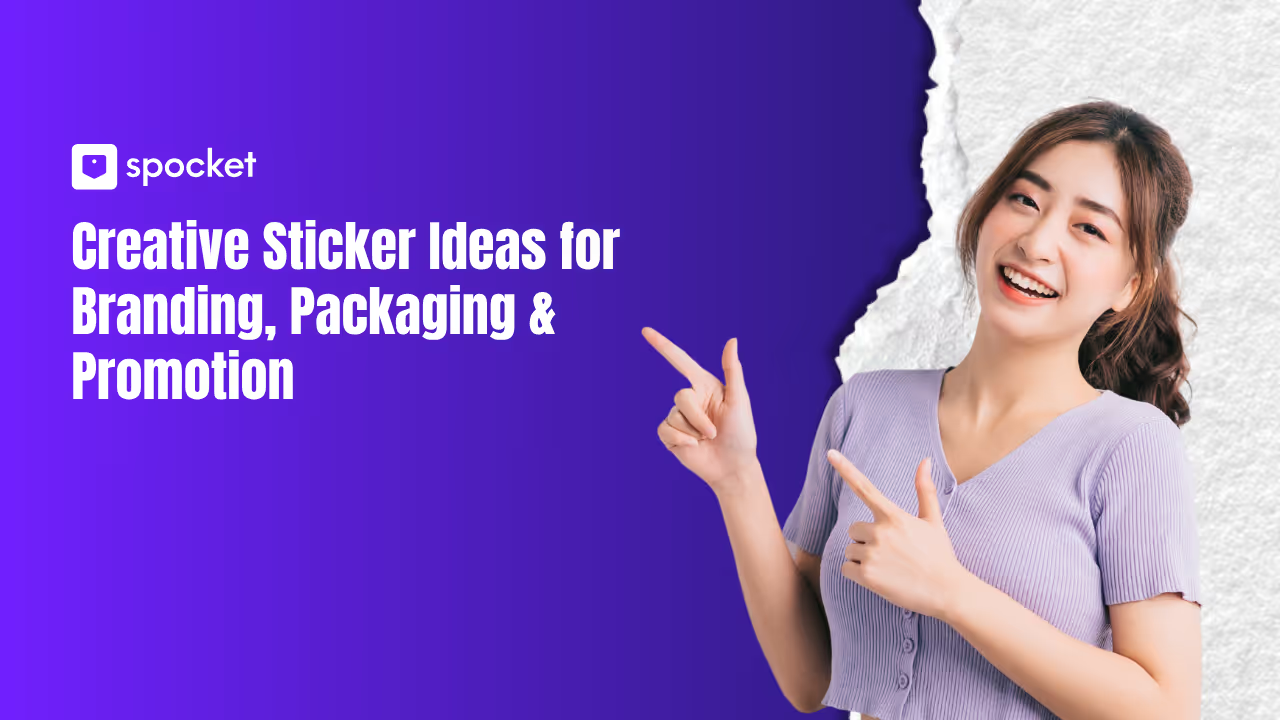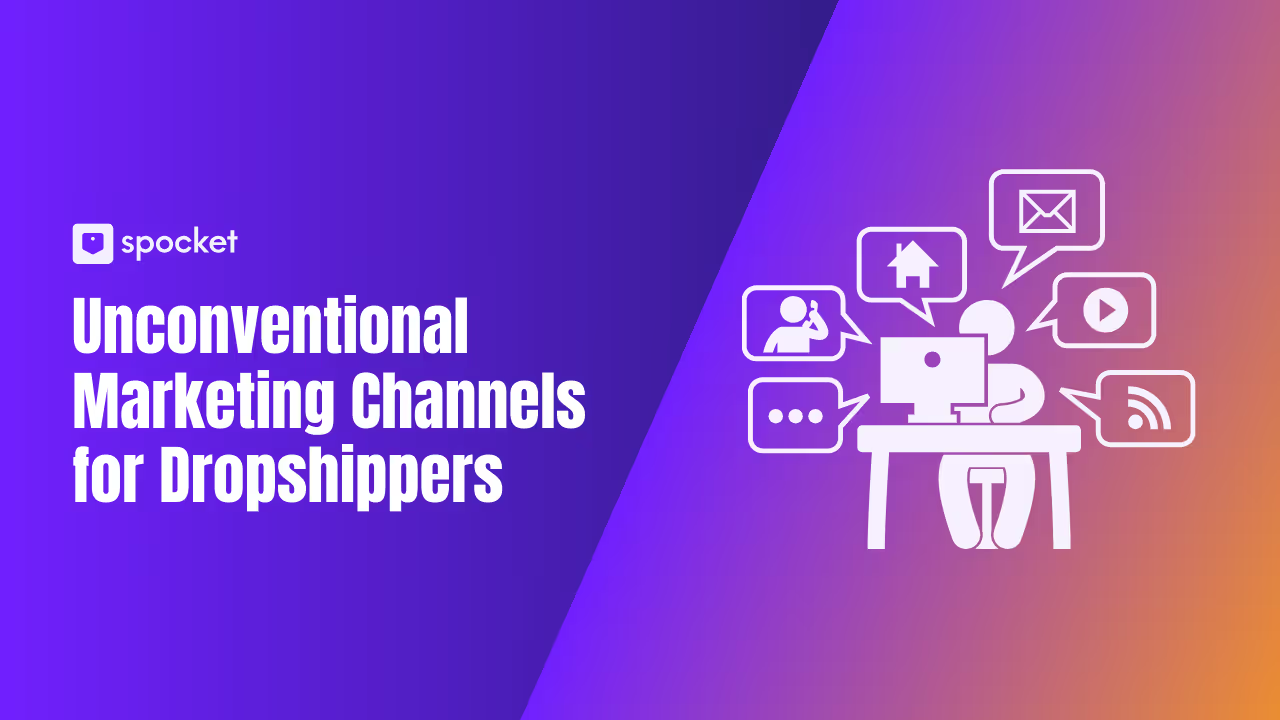Billboard advertising has been a cornerstone of marketing strategies for decades, and for good reason. Even in today’s digital age, it continues to provide unparalleled reach and brand visibility. Positioned in high-traffic areas, billboards grab attention like no other medium, creating powerful and lasting impressions.
If you’re looking to incorporate billboard advertising into your marketing mix, this comprehensive guide will walk you through its benefits, types, strategies for success, and real-life examples. Whether you're a small business owner or part of a global enterprise, this guide will help you harness the power of billboards to elevate your brand.
Why Billboard Advertising Still Matters
Even with the rise of online marketing, billboard advertising remains a valuable tool. According to Statista, the out-of-home (OOH) advertising industry, which includes billboards, generated $6.9 billion in the U.S. in 2022. Among this, traditional and digital billboards made up over 66% of the market share.

Statistics Proving Its Impact
- 71% of drivers report noticing billboards, and 26% say they’ve visited a website they saw on a billboard.
- A Nielsen study found that OOH advertising delivers a 46% ROI, higher than radio and print ads.
- Digital billboards are booming, with installations growing by 6% annually worldwide, offering even more opportunities for dynamic, eye-catching campaigns.
Billboards are not just surviving—they’re evolving to remain a crucial element of marketing strategies for brands across industries.
Industries That Benefit Most from Billboard Advertising
1. Retail
Local retailers use billboards to drive foot traffic by advertising discounts, new collections, or seasonal promotions. For instance, a clothing store might place a billboard highlighting its winter sale on a busy highway near a shopping district.
2. Real Estate
Realtors often place billboards near neighborhoods to highlight properties and new developments. A billboard showcasing a “dream home” with a contact number can generate direct inquiries.
3. Entertainment
Movies, music concerts, and streaming platforms use bold billboards to create excitement around upcoming releases. The success of Netflix’s “Stranger Things” billboard campaign is a testament to this strategy.
4. Healthcare and Fitness
Hospitals, gyms, and wellness centers leverage billboards to advertise services, memberships, or health tips. A gym could feature a motivational message to inspire viewers to sign up.
5. E-commerce and Dropshipping
Even online businesses benefit from billboard advertising. For instance, you can promote trending products sourced from Spocket, showcasing your brand to a local audience while directing traffic to your eCommerce store.
The Benefits of Billboard Advertising
Billboard advertising offers unique advantages that other marketing channels can’t match. With their large format, strategic placement, and creative possibilities, billboards are an incredibly effective way to capture attention and deliver your message to a wide audience. Let’s explore the key benefits in detail.
Unmatched Visibility
Placed in strategic, high-traffic locations such as highways, intersections, and city centers, billboards ensure your message reaches thousands of people daily. A single billboard in New York’s Times Square can garner millions of impressions annually due to foot and vehicle traffic.
24/7 Exposure
Billboards provide round-the-clock visibility, making them a reliable marketing tool. Unlike digital ads that can be skipped or blocked, billboards consistently showcase your brand to passersby day and night, keeping your business front and center.
Cost-Effective for Large Audiences
The cost-per-thousand-impressions (CPM) for billboards is relatively low compared to other traditional forms of advertising. For example, a static billboard in a busy city might cost $5–$10 per thousand impressions, significantly less than TV commercials or magazine ads.
Localized Targeting
Billboards allow businesses to focus on specific geographic locations, making them ideal for targeting local customers. Whether it’s promoting a neighborhood restaurant or advertising a new real estate project, billboards can attract the right audience at the right place.
Creative Freedom
Billboards offer unparalleled flexibility in design and messaging, making them a canvas for creative expression. From bold visuals to interactive elements, they help brands make a memorable impact. For instance, Coca-Cola’s billboard featuring condensation and a real drinking straw created a sensory experience that resonated with viewers.
Types of Billboard Advertising
To make the most of billboard advertising, it’s essential to choose the type that aligns with your business goals and target audience.
Traditional Billboards
These static billboards display a single message throughout the campaign. They are ideal for long-term branding efforts. For example, a car dealership might use a traditional billboard to advertise its year-end clearance sale.
Digital Billboards
Equipped with LED screens, digital billboards can rotate multiple messages, include animations, and even display real-time updates. This flexibility is perfect for time-sensitive promotions or announcements.

Mobile Billboards
Mounted on vehicles, mobile billboards take your message directly to your audience. A restaurant could use mobile billboards to promote its menu across different neighborhoods.

3D Billboards
Adding a three-dimensional element to your billboard can make it stand out dramatically. A great example is the 3D KitKat billboard featuring oversized chocolate fingers breaking apart.

Eco-Friendly Billboards
With sustainability becoming a priority, some brands are using solar-powered or recycled material billboards to reinforce their commitment to the environment.

How to Create an Effective Billboard Advertising Campaign
Creating a successful billboard advertising campaign requires careful planning, strategic thinking, and a clear understanding of your target audience. While billboards are highly effective at grabbing attention, a poorly executed campaign can miss the mark. Follow these key steps to ensure your billboard delivers maximum impact and achieves your marketing objectives.
1. Understand Your Goals
Before diving into billboard advertising, it’s essential to define your goals clearly. What do you want to accomplish with your campaign?
- Increase brand awareness: Use bold, visually striking designs to make your brand memorable.
- Drive traffic to your store or website: Include actionable details like a website URL, store address, or QR code.
- Announce a new product or service: Highlight features and benefits in a concise, eye-catching way.
For instance, a local bakery might use a billboard to promote a grand opening, while an online retailer could drive traffic to its eCommerce store by showcasing its latest products.
2. Know Your Audience
Your billboard campaign should resonate with the specific demographic you’re targeting. This involves selecting the right location and crafting a message that appeals to your audience’s preferences, lifestyle, and needs.
- Example 1: A luxury watch brand targeting affluent customers might place billboards in upscale shopping districts or near premium office complexes.
- Example 2: A fast-food chain promoting late-night meals could strategically position billboards near highways or urban areas with high nighttime traffic.
Researching your audience’s behaviors, commuting patterns, and preferences ensures your billboard reaches the right people at the right time.
3. Craft a Simple, Clear Message
A billboard’s message must be concise and impactful because viewers only have a few seconds to absorb it as they pass by.
- Stick to seven words or less to ensure clarity.
- Use bold, legible fonts and contrasting colors to enhance readability.
- Incorporate visuals that reinforce your message without overloading the design.
Example of a Clear Message:
“Shop Local. Save Big. [YourWebsite].com”
This message is short, actionable, and provides clear direction for the audience. It’s also easy to recall, even after a brief glance.
4. Strategic Placement
The placement of your billboard can significantly impact its effectiveness. High-traffic areas like highways, intersections, and urban hotspots are ideal for maximizing visibility and impressions.
When choosing a location, consider:
- Commuter patterns: Identify routes with heavy traffic during peak hours.
- Proximity to your business: Placing billboards near your store can guide potential customers to your location.
- Local relevance: For instance, a ski resort might advertise on billboards leading to mountain passes during winter.
A strategically placed billboard ensures your message reaches a large and relevant audience.
5. Include a Call-to-Action (CTA)
A well-crafted call-to-action (CTA) encourages viewers to take the next step, whether it’s visiting your website, calling your business, or following your social media accounts. A strong CTA is actionable, clear, and aligned with your campaign’s goals.
Examples of CTAs for Billboard Campaigns:
- “Visit [YourWebsite].com to Save 20%!”
- “Call Now for a Free Quote: [PhoneNumber].”
- “Download Our App Today!”
Ensure the CTA is prominent and easy to follow. Including details like a URL, QR code, or phone number gives your audience a clear path to engage with your business.
6. Incorporate Technology
Modern technology offers exciting ways to enhance your billboard campaign and bridge the gap between traditional and digital marketing.
- QR Codes: Adding a scannable QR code can direct viewers to a landing page, app download, or online store.
- Augmented Reality (AR): Interactive billboards using AR can create memorable and engaging experiences. For example, a fashion brand could allow passersby to virtually try on outfits using their smartphone.
- Geotargeted Ads: Use geolocation to deliver targeted digital ads to individuals who’ve passed by your billboard, reinforcing your campaign’s message.
Incorporating technology not only makes your billboard more engaging but also provides measurable data to track its performance.
Real-Life Examples of Successful Billboard Campaigns
Spotify Wrapped
Spotify’s data-driven "Wrapped" campaign used witty and personalized messaging on billboards to engage users and create buzz.

Nike: "Just Do It"
Nike’s billboards featuring empowering slogans and athletes demonstrate how emotional storytelling can resonate with a wide audience.

Apple: Shot on iPhone
Apple’s billboard campaign showcasing user-generated content is a masterclass in combining creativity and authenticity to inspire trust.

McDonald’s Follow the Arches
McDonald's cleverly used portions of its iconic golden arches to direct customers to the nearest outlet, proving that minimalism can be incredibly effective.

Integrating Billboard Advertising with Digital Marketing
While billboard advertising is a powerful standalone tool, its impact can be amplified by integrating it with digital marketing strategies. Combining traditional and digital efforts creates a cohesive campaign that reaches your audience across multiple touchpoints, increasing engagement and driving results.
1. Boost Online Presence
One of the most effective ways to merge billboard advertising with digital marketing is by using your billboard to drive traffic to your website or online store.
- Example: If you run an eCommerce business powered by Spocket, you can showcase trending or best-selling products on your billboard. Include a simple, memorable URL or a QR code that directs customers to shop online.
- Impact: This approach not only broadens your audience but also connects your offline efforts to your online sales funnel, creating a seamless user journey.
2. Use Hashtags
Incorporating campaign-specific hashtags on your billboard encourages viewers to engage with your brand on social media.
- How it Works: Create a catchy, easy-to-remember hashtag related to your campaign and prominently display it on your billboard.
- Example: A fitness center might use the hashtag #GetFitNow on their billboard, prompting people to share their workout progress or engage with the brand on Instagram.
- Benefit: This drives organic social media engagement and extends the reach of your campaign beyond the billboard’s physical location.
3. Retargeting
Geotargeting is a cutting-edge technique that bridges the gap between traditional and digital advertising.
- How it Works: Use location-based advertising to serve digital ads to individuals who have passed by your billboard.
- Example: A coffee shop could target commuters with Instagram ads featuring promotions after they’ve driven past a billboard advertising a special offer.
- Benefit: Retargeting reinforces your billboard’s message, making it more likely for your audience to take action.
Measuring the ROI of Your Billboard Campaign
While tracking the performance of traditional billboard advertising has historically been a challenge, modern techniques and tools make it possible to measure its effectiveness and calculate ROI.
1. Website Traffic and Conversions
By using unique URLs or UTM codes on your billboard, you can directly monitor how much traffic and how many conversions are driven by your campaign.
- Example: A billboard promoting a summer sale could use the URL “YourWebsite.com/SummerSale” to track visits and purchases specific to that campaign.
- Benefit: This data provides clear insights into how well your billboard is driving online engagement.
2. Sales Data
Analyze sales trends in areas near your billboard locations to gauge its effectiveness.
- Example: If your billboard advertises a local event or promotion, track the uptick in foot traffic or sales at nearby stores during the campaign period.
- Benefit: This helps measure the localized impact of your billboard and justifies its placement and cost.
3. Customer Surveys
Customer feedback is another valuable tool for assessing the effectiveness of your billboard campaign.
- How it Works: Ask new customers how they heard about your business during checkout or through follow-up emails.
- Example: A restaurant might find that a significant percentage of diners discovered them through a billboard ad.
- Benefit: Surveys provide qualitative insights that complement your quantitative data.
Future Trends in Billboard Advertising
The billboard advertising industry is evolving rapidly, embracing technology and sustainability to enhance its impact and appeal. Here are some key trends shaping the future of billboards.
1. AI and Machine Learning
Artificial intelligence is revolutionizing the way billboards communicate with audiences.
- How it Works: AI-powered billboards can analyze real-time data, such as weather conditions or traffic patterns, to display tailored messages.
- Example: A clothing brand might display raincoats on a billboard during rainy weather and switch to sunglasses when the sun comes out.
- Benefit: This level of personalization increases relevance and engagement, making your campaign more effective.
2. Interactive Billboards
Interactive billboards use technology like touchscreens or augmented reality (AR) to engage viewers in a memorable way.
- How it Works: These billboards encourage passersby to interact with the display, often via their smartphones.
- Example: A car brand might let users configure their dream car on a touchscreen billboard or virtually “test drive” a vehicle using AR.
- Benefit: Interactive elements create a unique experience that leaves a lasting impression and encourages audience participation.
3. Sustainability Focus
As environmental concerns grow, brands are prioritizing eco-friendly advertising solutions, and billboards are no exception.
- How it Works: Solar-powered billboards, recycled materials, and energy-efficient displays are becoming increasingly popular.
- Example: A billboard powered by solar panels not only promotes a brand but also reinforces its commitment to sustainability.
- Benefit: Eco-friendly billboards resonate with environmentally conscious consumers and enhance a brand’s reputation.
Conclusion
Billboard advertising is a tried-and-true method to boost visibility and drive engagement. Its continuous exposure, strategic placement, and creative freedom make it a standout choice for brands of all sizes. By combining it with modern technologies and digital marketing efforts, businesses can maximize ROI and create a lasting impression.
Pair your billboard efforts with an eCommerce solution like Spocket to seamlessly connect your offline and online branding strategies.
Take advantage of billboard advertising today and let your brand shine on the big stage!







































